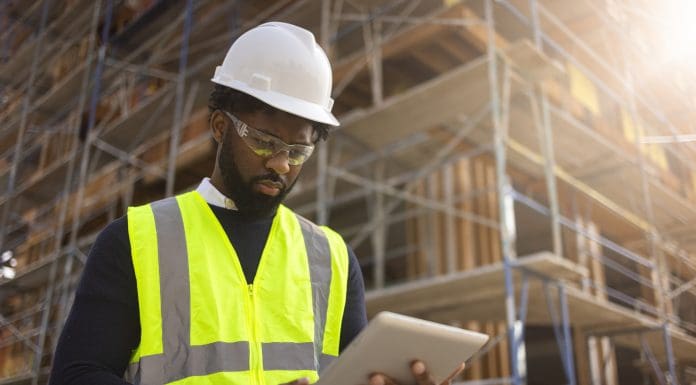
Steven Kavanaugh, director of engineering, Panos Rousakis, associate director, Jason Bell, principal consultant, and Humza Khan, fire engineering team lead at Socotec, sat down with PBC Today’s Matt Brundrett to discuss common challenges faced when creating a comprehensive Building Safety Case
Building health & safety
Jason Bell MSc BSc(Hons) DipSM IMaPS MIFSM
- What are the common challenges you perceive the PAP, AP & developers are facing with the production of the Building Health & Safety section of the Building Safety Case?
One of the difficulties we encountered is the lack of process and procedure regarding the management of safety in buildings, as well as the development of a business safety plan.
The sets of information you need to compile are quite complex, so you must examine everything, from design through construction to the actual management of the building. Once you’ve completed that and successfully submitted it, you then have the task of implementing and managing it. It’s not a one-off document; it’s something that requires regular revisiting and periodic updating, so there’s an associated competency that you need to have to do that effectively.
The final element that is an issue is the resident’s engagement strategy and its effectiveness in bringing transparency, visibility, and effective communication regarding safety in the building.
The difficulties with residential engagement, of course, come from knowing who the residents are. Several buildings can be quite dynamic in their occupancy. For example, in a student residence, during term time, you’ve got students. You may have a good sense of who they are and what their risk profile is, but it may then be rented out during the holidays, and the following year may have different residents again.
This happens in other residential high-rise buildings as well. So, defining the risk profile of the occupants can be quite difficult and, of course, that’s a key feature of the building safety case.
- What are the wider implications for the industry related to the Building Safety Case process?
There are several issues, but one of the most challenging ones to address is regulatory comprehension, or the regulators’ understanding of what the process entails and what they need to do. Previously, they would gain an understanding of more complex projects, such as high-risk buildings, through access to building control. They would engage in a traditional dialogue to understand the issues associated with the design and construction.
Now that this process has been streamlined and must be done thoroughly, but with less time available, it presents an obvious challenge for the regulator. We’re also seeing, due to the implementation of building safety requirements, a slowing or bottlenecking at the gateway to the approval stage of the process, which is impacting delivery.
The slowness in total project delivery can further compound this to reach the desired size and complete it, again due to the interactions and interventions required by the act.
There’s also a financial impact on some of the safety standards’ requirements, such as the installation of sprinklers in certain buildings or the protection of escape staircases. These can be quite debilitating cost increases, adding complexity to a project and making it particularly challenging for local developers and councils.
Many projects that may have been given the go-ahead previously are now being challenged by these kinds of financial impacts and uncertainty in the delivery programme. As a result, we’re all adapting to these new standards, and there’s a requirement for organisational competency to be reviewed alongside individual competency.
At Socotec, we’ve invested considerable effort in bringing our people up to the required standard and providing them with the support necessary to understand the nuances and implications of the new regime.
Finally, there’s the process as a whole. If we view it as a holistic process, we can strike a balance between safety, which is imperative, and practicality, so that we can deliver these projects in a timely and safe manner.
Fire engineering
Humza Khan AIFireE, GMICE
- What are the key fire safety elements that must be included in a building safety case report for the building safety regulator assessment?
When it comes to the safety section of the building safety case report, we need a comprehensive overview of the fire safety risks and the mitigation measures in place. Some of the key elements include the fire strategy report, which outlines the overall fire safety design, including fire safety systems, means of escape, and any performance-based approaches adopted during the design process. The second most important element is the fire risk assessment, which outlines the key fire risks present in a high-risk building.
The report must evaluate those risks and the control measures that could be implemented to mitigate the risk.
For example, the fire door surveys, where the condition and compliance of these fire doors must be recorded in the building safety case, and must support the compartmentation surveys evaluating the integrity of the fire rated walls, compartment, floors and any fire stoppings to ensure that there is an integrity of compartmentation within the high-risk building.
There is also a need for a dimension of administrative risk reduction, or measures in place to further mitigate the risk to occupants within the high-risk building. These are the essential elements for completing the building safety report.
- What are the main challenges in creating a compliant building safety case report from a fire engineer’s perspective?
When compiling the fire safety section of the Building Safety Case Report, both the accountable person and the report author face several key challenges, including:
- Lack of a Fire Strategy Report – In some cases, there is no existing fire strategy report, or it lacks critical information about specific fire safety systems and means of escape, making it difficult to verify compliance with Part B (Fire Safety) of the Building Regulations 2010. Additionally, outdated reports make it difficult to assess the current status of compliance.
- Missing Performance-Based Fire Engineering Documentation – If the building was designed using a performance-based fire engineering approach, crucial reports such as structural fire analysis or CFD smoke modelling are usually found to be missing, leading to gaps in a comprehensive assessment.
- Incomplete or Missing Compartmentation Surveys – Without a thorough compartmentation survey, there is uncertainty about the integrity of fire-resistant barriers, which are essential for preventing fire spread.
- Outdated Fire Door Surveys and Fire Risk Assessments – Fire doors and other fire protection measures deteriorate over time. If surveys and assessments are outdated, it becomes challenging to accurately assess the current fire safety condition of the building.
Addressing these issues early in the process is crucial for ensuring compliance with BSR requirements and maintaining a robust fire safety strategy.
Example: One of the buildings was under an enforcement notice from the local fire service due to several issues and had to operate on a ‘Simultaneous’ evacuation in contrast to ‘Stay-put’ for a typical residential accommodation.
There were several non-compliances, including insufficient compartmentation, means of escape, and lack of fire door surveys, etc.
SOCOTEC helped the Client by developing a comprehensive retrospective fire strategy highlighting the key issues and the next steps to be taken to meet the Building Regulations.
In the absence of the required documentation, SOCOTEC assisted the accountable person in preparing an action plan that outlined the next steps to be taken. This would provide BSR with an understanding of the current building situation and how the accountable person plans to meet the requirements of the Building Safety Act 2022.
- What are the common fire safety challenges building owners face when preparing a Building Safety Case Report, and how does SOCOTEC assist in the process?
One of the biggest challenges building owners face is gathering the necessary fire safety documentation and reports. This is more relevant in the case of older buildings where design documentation is often missing or hard to find.
Another significant challenge is maintaining the integrity of compartmentation and fire doors. Over time, fire-resistant barriers and doors can deteriorate, requiring regular inspections and maintenance. However, due to resource constraints or a lack of awareness, these inspections are often delayed, thereby increasing fire safety risks.
At Socotec, we try to bridge the gap between the person accountable (building owners) and the latest fire safety regulations under the Building Safety Act.
We conduct a thorough review and provide a detailed list of missing fire safety documents and assessments required for compliance.
After reviewing the available documentation, we highlight key fire risks and provide clear recommendations on how to address them.
We work closely with the accountable persons to develop a structured action plan that outlines the steps needed to improve fire safety and comply with BSR requirements.
This proactive approach ensures that building owners are fully aware of their fire safety obligations and have a clear path to achieving compliance. Additionally, having a well-documented action plan allows the BSR to evaluate the building’s fire safety measures and determine the necessary next steps for the accountable person.
- How are potential fire safety risks identified, and what impact do they have on the Building Safety Case Report?
As part of the Building Safety Case Report, we conduct a Fire Risk Appraisal, which is a Hazard Identification (HAZID) exercise. This process involves, first, identifying potential fire hazards within the building and qualitatively assessing their impact on occupants, considering factors such as fire spread, evacuation challenges, and the effectiveness of existing fire protection measures. Then we review the design risk mitigation measures outlined in the first strategy. Finally, we consider administrative risk reduction measures, such as fire safety management procedures and resident awareness programs.
The purpose of the HAZID analysis is to assess risks to building occupants and support the development of the Building Safety Case Report in compliance with the Building Safety Act. While it is not a technical review of individual fire safety systems, it highlights the importance of having effective fire protection measures in place.
During this exercise, we try to evaluate the various fire risk scenarios, such as fires originating from cooking activities in kitchens, electrical faults leading to ignition, or fires caused by candles, smoking, or lithium-ion battery-powered devices like electric bicycles, which are increasingly common these days.
HAZID analysis helps determine practical risk reduction actions that should be taken to mitigate fire risks to ‘so far as is reasonably practicable’. It also provides additional recommendations and expert insights from a Fire Engineer, ensuring that the fire safety strategy remains robust and effective.
Example: In one of the projects, the building had a mechanical smoke ventilation system in the communal corridor. The smoke ventilation system was designed using a performance-based solution. However, the Client had no records of the CFD (Computational Fluid Dynamics) report, and the performance criteria set for the system.
In the absence of such records, especially for older buildings, relying only on the design risk mitigation measures is not enough. Therefore, the action plan included the accountable persons to conduct the CFD study to assess the performance criteria of the smoke control system accurately.
Structural engineering
Panos Rousakis MEng MSc DIC LLM CEng MICE MIStructE SAAE
- What do you perceive to be the main challenges faced when producing the Structural Engineering sections of a Building Safety Case?
There is a common misconception among some accountable persons regarding the purpose of the Building Safety Case. Many principal accountable persons mistakenly believe that it focuses on regulatory compliance, when in fact, its core objective is to ensure the actual safety of the building.
As a result, some may rely too heavily on documents like building control certificates, while neglecting the need for comprehensive structural engineering records.
One of the most frequent challenges we encounter is the lack of structural documentation, which is critical in demonstrating the building’s inherent safety features as designed.
This issue is particularly pressing given that approximately 12,000 existing high-risk buildings must now undergo retrospective building assessment certification by the Building Safety Regulator. While some of these buildings are newly constructed, many date back to the 1960s, ’70s, and ’80s.
Considering that electronic storage of structural documentation only began around the early 2000s, it’s not surprising that records for older buildings are often incomplete or missing altogether.
In fact, for buildings constructed before the early 1990s, missing documentation is a widespread issue. At Socotec, we address this gap by reconstructing structural records through satisfaction surveys and modern techniques, such as 3D laser scanning. This process is tailored to the specific needs of each accountable person.
For example, if a building is already 60 years old and intended to remain in use for another 60 years, it is vital to compile this information retrospectively. Doing so not only supports future maintenance and alterations but also contributes to the “Golden Thread”—the comprehensive set of documents essential to the ongoing safety and management of a building.
For older buildings, we would not expect to have a complete set of structural information made available for risk assessment; however, there are key areas that we would look at and look to provide evidence on to support the Building Safety Case, such as:
- An understanding of the building’s structural layout would enable an assessment of the building’s primary stability systems. This does not necessarily require a full set of drawings and plans, but rather a clear understanding of the column grid, wall, core position, and structural typology of the building, among other key elements.
- Identification of key elements, transfer structures, primary connections, and their location.
- Sufficient knowledge of the structural fire protection systems to allow for a meaningful assessment of its structural fire resistance (i.e., concrete cover or passive steelwork protection, etc.).
- An understanding of any balcony structural systems, their condition, connections, and restraints.
- Knowledge of any modifications made to the structure and evidence to support the design of any changes.
- Details of the different types of structural materials used to construct the building and where they have been used.
- General condition of the structure if it is over 3-4 years old.
- When producing a Building Safety Case, what are the most common critical documents missing from the set of Structural Engineering documents supplied at the start of the process?
Lack of basic structural information, such as the structural layout, location of key elements, and identification of the primary stability elements. For older buildings, this information can be determined by non-intrusive means via basic onsite measurement.
For older buildings, structural condition surveys carried out within the last 5 years are quite often missing; in fact, it is quite common to have no structural survey information provided at all.
Many of the buildings constructed in the 60s, 70s, and 80s haven’t undergone a single structural inspection since their completion. We would expect inspections to take place every five to 10 years, perhaps not a full, intrusive structural inspection, but certainly an inspection carried out by a competent structural engineer to give a fair assessment of the building in its current condition.
As buildings age and undergo changes in loading, we enter an era where fundamental structural engineering assessments become essential. This often involves intrusive surveys to determine critical factors such as the depth of concrete cover, which provides fire protection to the reinforcement and, by extension, to the building itself. These key pieces of information can only be obtained through thorough site investigations.
We’ve encountered many buildings around 60 years old, which we often describe as being on “borrowed time.” Alarmingly, in most of these cases, no in-depth condition surveys have been conducted to assess structural integrity.
For example, in concrete buildings, if the reinforcement is exposed—such as in garages—carbon dioxide from the environment can penetrate the concrete. This carbonation process gradually reaches the reinforcement, where it leads to corrosion, expansion, and ultimately cracking of the concrete.
For more modern buildings, we would normally expect to see a clear statement covering the disproportionate collapse strategy, supported by relevant calculations, within the structural basis of the design document.
At Socotec, we address these risks by integrating structural engineering expertise with material investigation capabilities to deliver a comprehensive, one-stop service. Our approach includes both visual structural appraisals and essential material testing. This allows us to assess the level of degradation accurately, which in turn informs the structural risks relevant to a building’s safety case. We can include both non-intrusive and intrusive structural surveys to support a Building Safety Case.
- What recent guidance information has been made available by the Building Safety Regulator to help with the production of Building Safety Cases?
Recently, the Building Safety Regulator (BSR) published formal assessment criteria that its multidisciplinary team will use when evaluating Building Safety Case submissions. Released in early December 2024, these criteria outline the key areas the BSR considers, including the safety management system, mandatory occurrence reporting, resident engagement strategy, fire safety, and structural safety.
When the new safety regime was first introduced, initial guidance was available, but it lacked prescriptive detail. This created some uncertainty within the industry, with stakeholders questioning how to meet the BSR’s expectations and what constituted a compliant Building Safety Case report.
In response to this, and to address industry concerns, the BSR has now made its assessment framework public. These clearly defined criteria provide much-needed clarity, helping those responsible for compiling Building Safety Case reports understand exactly what will be reviewed. Ultimately, this gives them the best possible chance of achieving first-time compliance.
Socotec provides a full Building Safety Case production service, which is undertaken by fully qualified professionals with expertise in Building Safety, Fire Engineering, and Structural Engineering. For advice on the process or to get a quote on the production of any aspect of a Building Safety Case, please contact Stephen Kavanagh on 07876238415 or email stephen.kavanagh@socotec.co.uk.
The post Developing a robust Building Safety Case appeared first on Planning, Building & Construction Today.

